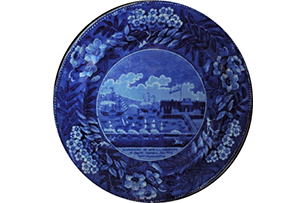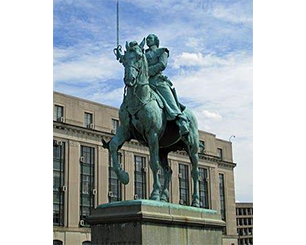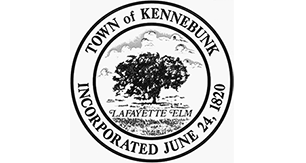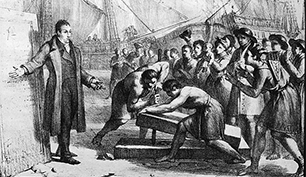
The Bicentennial of Lafayette’s Farewell Tour
by Alan R. Hoffman, President, American Friends of Lafayette and of the Massachusetts Lafayette Society
How Your Historical Society or Museum Can Participate in 2024 or 2025
The American Friends of Lafayette is planning a program of activities and events to celebrate the Bicentennial of Lafayette’s 1824-1825 Farewell Tour, when this major figure of the American Revolution and friend of the United States returned after a 40-year absence. During his return, this 67-year-old former major general of the Continental Army visited all 24 states and Washington City (plus what is now West Virginia) and became a household name among roughly 12,000,000 Americans, about a fourth of whom rushed to get a glimpse of him, and if possible, to clasp his hand.
The American Friends of Lafayette (AFL), founded in 1932, and its 475 members are taking the lead in planning and implementing the Farewell Tour Bicentennial from August 15, 2024 to September 8, 2025. Our goal is to commemorate Lafayette’s return visit by orchestrating events in most, if not all, of the places that Lafayette visited to coincide with the actual date of his visits there.
We are in the process of applying for funding to enable us to provide Lafayette reenactors, speakers, and historical consultants to assist historical societies, libraries, and museums with commemorative events. We are partnering with TravelStorys to create virtual tours of many of the places that Lafayette visited during his 13-month victory lap across the United States.
Lafayette’s Farewell Tour in 1824-25 was a momentous occasion that united the nation. Forty-three years after Yorktown and forty years after his last visit to the United States, Lafayette, “Hero of Yorktown,” was returning to his adoptive land. Contemporaries saw Lafayette’s Farewell Tour as a unique event in our history, indeed in world history. Hezekiah Niles wrote in Niles Weekly Register in 1824: “the volumes of history furnish no parallel – no one like La Fayette has ever re-appeared in any country.” Edward Everett of Massachusetts, an American politician, educator, college president, and author wrote in the North American Review in 1830 that the Farewell Tour was “an event, taken in all its parts, unparalleled in the history of man.”
The venues that Lafayette visited were both big cities and small towns. While there were spectacular events in cities – like Lafayette’s arrival at Castle Garden, New York on August 16, 1824, and the cornerstone ceremony at Bunker Hill on June 17, 1825 – the welcomes that Lafayette received in smaller towns throughout the six New England states and in all 24 states were no less sincere, heartfelt, and important to these venues. Indeed, Lafayette’s visit is highlighted in the town histories published by most of these smaller municipalities.

Lafayette’s Landing at Castle Garden, Staffordshire 1825, from the collection of the author
On September 4, 1824 Lafayette visited Hartford, Connecticut. Today, he is honored by an equestrian statue which stands proudly in view of the State Capitol building. This statue is a copy of the one inaugurated in Paris in 1908. The latter was called the “Children’s Statue,” since it was financed by coins collected by American school children.

Lafayette statue in Hartford, Connecticut
Lafayette visited Kennebunk, Maine on June 24, 1825 and stayed about four hours. He was greeted and entertained under an elm tree which was dubbed “The Lafayette Elm.” Although the tree has succumbed to disease, the town symbol of Kennebunk is still the Lafayette Elm.

The Lafayette Elm of Kennebunk, Maine
There are 80 cities, towns, and counties named for Lafayette as well as thousands of streets, parks, and squares, and there is a mountain, Mt. Lafayette in New Hampshire. There are numerous statues and monuments. There are several colleges, including Lafayette College chartered in 1826 in Easton, Pennsylvania. As Lafayette was a Freemason and shared many meals and events with his Masonic brethren during his 1824-1825 visit, there are now more than a score of “Lafayette Lodges” in the United States.
We have enlisted and will continue to enlist numerous partners in this important project. These include: The Lafayette Trail; the Massachusetts Lafayette Society; America 250; the Sons of the American Revolution; the Daughters of the American Revolution; Lafayette College; Souvenir Française; the W3R-US, a national historic trail; as well as Lafayette organizations in Fayetteville, North Carolina and LaGrange, Georgia. We hope those of you who work at institutions along the Farewell Tour route will join us too. You can find Lafayette’s route at The Lafayette Trail. If the Tour route passes through your city or town, you can click on the location to see where Lafayette stopped, enabling you to recreate the event on the same calendar day in 2024 or 2025, or to create an event relevant to today.
Because Lafayette was a committed abolitionist, an advocate for women’s rights, and a friend to Indigenous Americans, there will be opportunities to incorporate a broad range of stories and perspectives as part of this anniversary.
Our Farewell Tour Bicentennial Committee has over 175 members. There are state committees in Massachusetts, New Hampshire (including Maine and Vermont), and Connecticut (including Rhode Island). To join the Committee, please email americanfriendsoflafayette@gmail.com with a copy to arhesq@aol.com.

French Lithograph of Lafayette at Bunker Hill
Langlumé after a drawing by Mlle. d’Hervilly
Special Collections and College Archives, Skillman Library, Lafayette College
About the author
Alan R. Hoffman is President of the American Friends of Lafayette and of the Massachusetts Lafayette Society. He is the translator of Lafayette in America in 1824 and 1825, a first-hand account of the Farewell Tour by Lafayette’s private secretary, Auguste Levasseur (www.lafayetteinamerica.com). He is a participant in the New Hampshire Humanities Council’s Humanities to Go program. He is married to Marilyn Hoffman, the 2019 recipient of the NEMA Lifetime Achievement Award.